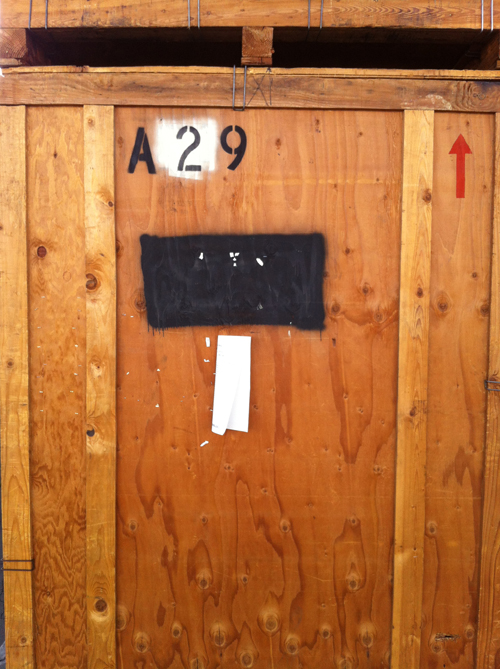Deterritorializations: Repetition, Stutter, Report (the second of two brief forays with a P.S. to come)
BY Jen Hofer
I want to explore a word that has taken hold of my consciousness and the hum of my interior thoughtscape—a word I realize, as I try to write about it, I don’t quite know how to articulate (which is, perhaps, precisely the articulation this particular word requires).
I first encountered the term “untranslation” in Felipe Ehrenberg’s brief “explanatory words” that open the 1973 version of Cecilia Vicuña’s book Saborami and its 2011 Chain Links reprint: he describes the book as “an untranslation from the spanish.” Critic and scholar Jill Kuhnheim calls Ehrenberg’s untranslation “idiosyncratic, more an improvisational response to Vicuña’s or his own words than a transcoding. His jazzlike ‘riffs’ on her meaning are a continual reminder of the complexity of communicating between two languages and cultures.” More so than perhaps any other translation I’ve read, saborami is an entirely different book for Spanish-English bilingual readers than it is for readers who know only one of those languages. The omissions, condensations, undoings, flourishes, and silences that characterize Ehrenberg’s version of the text (especially when read closely against Vicuña’s original) may in fact be the very impulses that might begin an articulation of “untranslation.”
I often talk about untranslation with my collaborator John Pluecker, co-founder of the language justice and literary experimentation project Antena. Even as we begin to make plans for an upcoming workshop in “untranslation,” I’m never quite certain what we mean when we use the term—or even what I myself mean, when I think “untranslation” quietly to myself as I work, reminding myself to think about movement (repositioning) and breath (air or context) rather than (or in addition to) representation or prescription—perhaps all different facets of the “faith” translation demands—even as I am constantly, physically aware of translation as writing under constraint at its most extreme, yet also at its most elastic.
I ended my last post with some of the questions that inflect and inform my translation practice constantly: How to make the repetition-stutter-report that is possible in the erroneous, imperfect, failed space of translation shimmer such that the “particular peculiar” might remain both legible and illegible in generative ways? How to “delineate, demarcate, control, restrict” in writing (or rewriting, as translation more aptly is) that might suggest a buoyant capacity to cross lines, remake marks, subvert control, evade restriction? (The quoted phrases are gratefully borrowed from Tonya Foster.)
Cecilia Vicuña, talking about the film “Kon Kon”: “In ritual, something comes up that is not being commanded, controlled, directed by you in any way.”
The ritual of not-I, of focused listening, of utterance as asymptote, of multiple attempts, multiple landings, remaining floating (with a dictionary as horizon line).
Scholar and translator Timothy Billings wrote an essay titled “Untranslation Theory” in a book on sinographies: “By ‘untranslation’ I mean something like both an 'undoing' and an 'un-cola'—a representation that radically transforms a text into another a priori discourse that simultaneously masks and justifies that transformation... An untranslation attempts to reconstruct a phantasmatic originary text along tendentious discursive lines…” I think of Nathaniel Mackey’s “phantom limb” and the book thrown into the winter weather in Bhanu Kapil’s Schizophrene. If (part of) what is reconstructed is “a phantasmatic originary text,” the translator is the phantom—it’s the translator’s original that’s reconstructed.
One of the things Lisa Robertson appreciates about the herbarium is its vulnerability, that it feels “pressed and delicately mended” like the silk a beloved person wore close to her body many years ago. Translation is the imperfect yet functional mend, the evidence that the item has been used or worn or worked many times over, the shift that retains the impression of the body that once was there.
Seamless translation is all about “seeming,” a representation of a text as if that text had been written in another language, or as if texts themselves (poems especially) were not inherently full of seams, gaps, leaps, porosities, and translations from experience or idea or imagination or object into text. Translation is untranslation in the sense that it is its own undoing. The errors and fissures are apparent, palpable, welcome: those snags are as integral a part of the reading experience as the content, the form, the various kinds of information presented by the texts—always plural, as translation is an act of doubling, or multiplying, or reducing, or all of those at once.
A poet, translator, book-maker, activist interpreter, educator, and urban cyclist, Jen Hofer was born...
Read Full Biography



